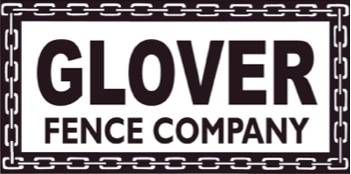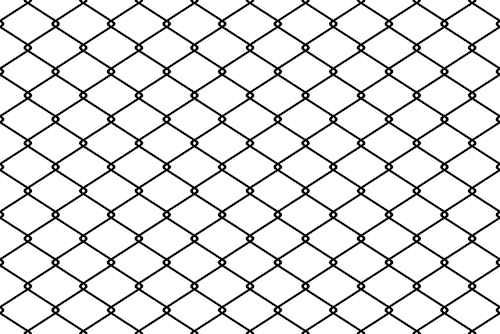Understanding Chain Link Fences
Introduction
Selecting the right chain link fence for your property is more than just a matter of security; it’s about blending functionality with aesthetics, ensuring durability, and making a cost-effective choice. Chain link fences are ubiquitous due to their versatility, offering a practical solution for residential, commercial, and industrial boundaries. However, the decision-making process can be overwhelming, given the variety of options available regarding materials, sizes, and finishes. This article aims to demystify chain link fences, comprehensively understanding their characteristics, history, and applications. By considering these factors, property owners can make informed decisions that align with their specific needs, ensuring their investment enhances their property’s security and appeal.
Understanding Chain Link Fences
What is a Chain Link Fence?
A chain link fence is a woven fence usually made from galvanized or coated steel wire. The wires run vertically and are bent into a zig-zag pattern so that each “zig” hooks immediately on one side and each “zag” with the wire immediately on the other. This forms the characteristic diamond pattern seen in this type of fencing. Chain link fences are known for their strength, durability, and ability to withstand harsh weather conditions, making them a popular choice for securing properties.
History and Evolution
The chain link fence has a rich history, dating back to the 19th century. Initially developed in the UK in 1844 by Charles Barnard, based on the cloth weaving machines of the time, it was a revolutionary way to create a sturdy yet flexible barrier. The manufacturing process was patented in 1845, and since then, chain link fencing has evolved significantly. Advances in materials and manufacturing techniques have made these fences more durable, affordable, and versatile, catering to a wide range of applications beyond what was initially imagined.
Common Uses and Applications
Chain link fences are incredibly versatile, making them suitable for various applications. Residentially, they are used to define property boundaries, secure pets, and provide a safe play area for children. Commercially and industrially, they serve as security barriers for buildings, parking lots, and construction sites, balancing visibility and security. Additionally, chain link fences are commonly used in agricultural settings to enclose livestock areas and public spaces such as parks, schools, and sports fields to ensure safety and order. Their adaptability to different environments and needs makes chain-link fences ubiquitous in urban and rural landscapes.
Factors to Consider Before Choosing Your Fence
Durability and Strength
When selecting a chain link fence, understanding the importance of gauge and wire thickness is crucial. The indicator of a fence refers to the thickness of the wires used in the fence’s construction, with lower numbers indicating thicker wires. Thicker wires offer more excellent durability and strength, making them ideal for areas requiring high security or where the fence will be subjected to heavy use or harsh weather conditions. Material types also play a significant role in the fence’s durability. Galvanized steel, known for its resistance to rust and corrosion, offers a robust option for most environments. Stainless steel, while more expensive, provides even more excellent resistance to corrosion, making it suitable for harsh or coastal climates. PVC-coated chain link fences, besides offering corrosion resistance, add an extra layer of protection against the elements. They can be customized in various colours to blend with the environment or meet specific aesthetic requirements.
Height and Size
Determining the ideal height for your chain link fence is essential for achieving the desired level of security and privacy. Residential fences typically range from 4 to 6 feet, balancing accessibility and barrier effectiveness. For commercial or industrial properties, where security is a more significant concern, fences may be as tall as 10 feet or more and include additional security features such as barbed wire. Calculating the size of your property and the total length of fencing needed is also essential for budgeting and planning purposes. Consider the layout of your land, any obstacles that might affect fence installation, and whether different areas of your property might require varying heights of fencing to meet specific needs or local regulations.
Coating and Finish Options
The choice of coating and finish for a chain link fence not only affects its durability but also its appearance. Galvanized finishes are standard, providing a silver appearance and excellent protection against rust. For those seeking a more refined look or a specific colour, PVC coatings offer a solution that is available in a range of colours to match or complement the property’s aesthetic. Powder-coated finishes are another option, offering a similar range of colour choices while providing a durable surface that resists chipping, fading, and wear over time. These coatings not only extend the life of the fence but also contribute to its visual appeal, allowing property owners to customize the look of their fencing to suit their tastes or corporate branding.
Maintenance and Longevity
Regular maintenance is critical to ensuring the longevity and durability of your chain link fence. Routine inspections can identify potential issues such as loose fittings, rust, or damage from impact, allowing for timely repairs before problems escalate. Cleaning your fence periodically with soap and water can remove dirt and debris that may cause corrosion over time, especially in the case of PVC-coated or powder-coated fences. Additionally, lubricating hinges and gates can prevent squeaking and wear. With proper care, a chain link fence can last for decades, providing a cost-effective and durable solution for property security and boundary definition.
Selecting the Right Chain Link Fence
Selecting the right chain link fence for your property involves more than just choosing the first option you come across. It’s about tailoring the fence to meet your specific needs, preferences, and unique characteristics. This selection process can be significantly enhanced through customization options and professional consultation, ensuring that the final product secures your property and complements its aesthetics.
Customization Options
Color Choices
Gone are the days when chain-link fences were available only in classic metallic silver. Property owners can now choose from a wide range of colours thanks to vinyl coatings. Black, green, brown, and white are popular choices that blend seamlessly with residential landscapes, commercial properties, and public areas. These colour options allow for a more personalized touch, ensuring the fence enhances the property’s appearance rather than detracting from it.
Privacy Additions (Slats and Screens)
Privacy slats and screens offer an ideal solution for those seeking added privacy without sacrificing the durability and cost-effectiveness of a chain link fence. Slats can be inserted into the fence mesh, providing a visual barrier while allowing airflow. They come in various colours and materials, including vinyl and aluminium, further expanding customization options. On the other hand, privacy screens attach to the fence and can block wind, dust, and visual access from outside. These additions transform the open weave of a chain link fence into a privacy barrier, making it suitable for backyard enclosures, pool areas, and commercial sites requiring confidentiality.
Consulting with Professionals
When to Seek Professional Advice
While many aspects of selecting a chain link fence can be researched independently, consulting with professionals is invaluable for navigating complex considerations such as local zoning laws, terrain challenges, and specific security needs. Professionals can provide insights into the best materials and designs for your area’s climate and the intended use of the fence.
Finding a Reputable Supplier and Installer
Selecting a reputable supplier and installer is crucial for ensuring the longevity and effectiveness of your chain-link fence. Look for companies with positive reviews, a portfolio of completed projects, and a willingness to provide references. A reputable professional will offer a detailed quote, explain the installation process, and ensure that the chosen fence meets your needs and local regulations.
Installation Tips
DIY vs. Professional Installation
Deciding between DIY and professional installation depends on your skills, the project’s complexity, and your budget. DIY installation can be more cost-effective for those with the necessary tools and expertise. However, professional installation guarantees that the fence is set up correctly, adhering to all local codes and standards, and often comes with a warranty.
Step-by-Step Installation Overview
- Planning: Identify the fence layout, including where gates will be placed. Check local building codes and utility locations.
- Setting Posts: Dig holes for the posts, ensuring they are spaced correctly and set at the proper depth for stability. Concrete is typically used to secure the posts.
- Attaching the Mesh: Once the posts are set, the chain link mesh is unrolled and connected to the posts using tension bars and bands.
- Adding Accessories: Install gates, privacy slats, or screens as needed.
Common Installation Challenges
- Uneven Ground: Installing a fence on uneven terrain requires adjusting the post heights and possibly stepping or contouring the fence to match the ground’s slope.
- Post-Setting: Ensuring posts are perfectly vertical and set at the correct depth can be challenging, especially in rocky or thorny soil.
- Tensioning: Properly tensioning the chain link mesh is crucial for a secure and visually appealing fence, requiring careful attention and technique.
By considering these factors and tips, property owners can ensure that their chain-link fence installation is successful and will provide the desired security, privacy, and aesthetic appeal for years to come.

